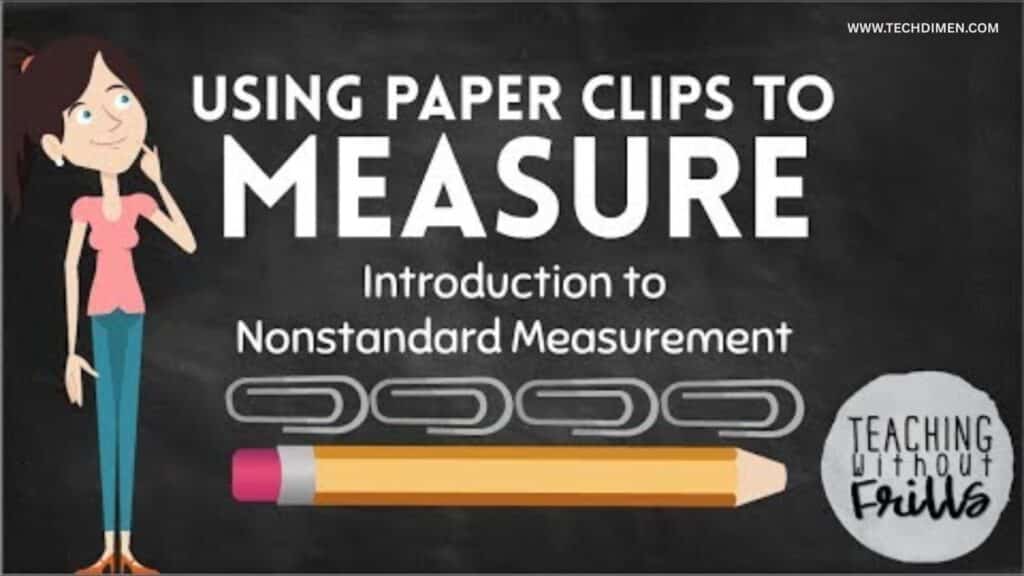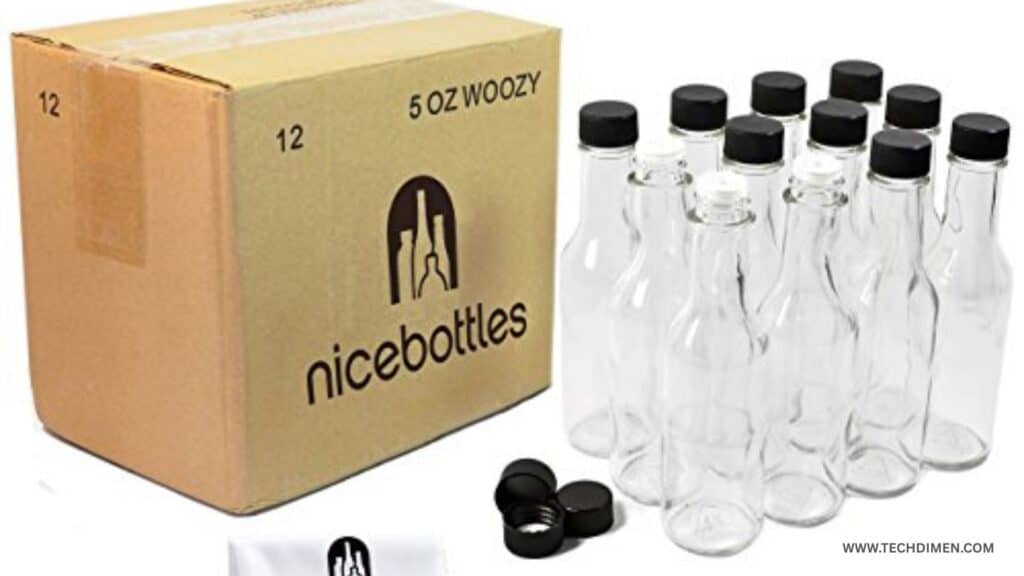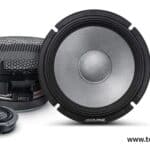Whether you’re following a foreign recipe, preparing baby formula, or measuring chemicals in a lab, converting 5 oz to ml is a practical skill that saves time and prevents errors. This in-depth guide walks you through everything you need to know about this essential conversion how it’s calculated, where it’s used, and why accuracy matters.
How Many Milliliters Are in 5 Ounces?

To put it simply, 5 ounces equals 147.87 milliliters.
This conversion is based on the US fluid ounce, which equals 29.5735 milliliters. To get the conversion, multiply 5 by 29.5735, which gives you exactly 147.8675 milliliters. For everyday use, it’s often rounded to 147.87 ml.
In practice, you’ll round based on your needs. For cooking, most people use 148 ml. For baby bottles, many manufacturers round it up to 150 ml for convenience. In scientific settings, sticking with the precise 147.87 ml is usually best.
the exact conversion from ounces to milliliters is crucial whether you’re cooking, feeding a baby, or working in a lab. Let’s break down this measurement thoroughly and answer the question: how many milliliters are in 5 ounces?
Exact Answer: 5 oz Equals 147.87 Milliliters
To convert 5 ounces to milliliters, use the standard US conversion factor:
1 US fluid ounce = 29.5735 milliliters
So the formula becomes:
5 oz × 29.5735 ml = 147.8675 ml
When rounded for practical use, 5 oz equals 147.87 ml. This is the standard US fluid ounce measurement, which is used in most recipes, baby feeding guidelines, and packaging in the United States.
UK Ounce vs. US Ounce
One major point of confusion comes from the difference between US fluid ounces and UK (Imperial) fluid ounces.
1 UK fluid ounce = 28.4131 ml
Using the UK conversion:
5 UK oz × 28.4131 ml = 142.0655 ml
So if you’re following a British recipe or using UK packaging, 5 oz equals 142.07 ml instead of 147.87 ml. This difference becomes significant in tasks where precise measurement matters—like baking, medication dosing, or laboratory work.
Here’s a clear comparison:
| Measurement Type | 1 Ounce Equals | 5 Ounces Equals |
|---|---|---|
| US Fluid Ounce | 29.5735 ml | 147.87 ml |
| UK (Imperial) Ounce | 28.4131 ml | 142.07 ml |
Rounded Measurements for Practical Use

In many practical settings, exact numbers like 147.8675 ml are unnecessarily precise. Here’s how different industries round the conversion:
In cooking and food prep, people usually round up to 148 ml. It’s a close approximation and won’t affect most recipes.
In baby feeding, many bottles are marked in 50 ml increments. So 5 oz is often rounded to 150 ml, especially when mixing formula or breast milk.
In pharmaceuticals and labs, precision matters. So 147.87 ml is used without rounding unless otherwise directed.
Why This Conversion Matters
Small differences in volume may not seem like a big deal until they are. Here’s why being accurate with the 5 oz to ml conversion matters:
In baking, too much or too little liquid can alter the structure of your cake or dough.
In baby feeding, overfeeding or underfeeding could lead to discomfort or inadequate nutrition.
In science or medicine, a dosage or solution that’s off by even a few milliliters can compromise safety or accuracy.
Being precise with volume measurements isn’t about being overly cautious it’s about getting consistent results.
Formula Recap
To convert any ounce amount to milliliters, use the general formulas:
US Ounces to ml: volume (oz) × 29.5735 = milliliters
UK Ounces to ml: volume (oz) × 28.4131 = milliliters
So for 5 fluid ounces:
US: 5 × 29.5735 = 147.87 ml
UK: 5 × 28.4131 = 142.07 ml
Remember to always check the origin of your measurement source. Is it from the US, the UK, or another country that uses the metric system?
the Ounce: Why We Convert to Milliliters
The fluid ounce is a unit of volume used primarily in the United States and a few other countries. On the other hand, milliliters are part of the metric system, which is the standard worldwide.
Converting 5 ounces to milliliters is useful in many situations. For example, if you’re using a US-based recipe but have metric kitchen tools, you’ll need to convert ounces to milliliters to measure ingredients correctly. The same goes for international baby formula instructions that use ml, or medicines dosed in milliliters rather than ounces. Even in scientific laboratories, using milliliters ensures accuracy when preparing solutions or analyzing data.
Certainly! Here’s an in-depth, well-structured section titled “The Ounce: Why We Convert to Milliliters”, written in markdown format with natural integration of your target keywords, varied sentence structure, and useful facts no fluff.
When it comes to liquid measurements, the ounce has long been a staple in the United States and parts of the United Kingdom. But the rest of the world, from Europe to Asia to Australia, relies on the milliliter a core unit in the metric system. This difference is exactly why so many people search for answers like “5 oz to ml”, especially in contexts like cooking, baby feeding, or lab work.
What Is an Ounce, Really?
The term “ounce” can be confusing because it refers to different things depending on the context. There are two primary types of ounces people encounter:
Fluid ounces: Used to measure volume, especially for liquids like water, milk, or juice.
Ounces by weight: Used for dry goods like flour, sugar, or meat, and often causes mix-ups when converting recipes internationally.
For the purposes of conversion to milliliters, we’re always referring to fluid ounces typically abbreviated as fl oz.
Why the Milliliter Became the Global Standard

The milliliter (ml) is a metric unit of volume that’s used nearly everywhere outside the US. It’s part of the International System of Units (SI), which is known for being logical, scalable, and easy to convert. In the metric system, everything is based on powers of 10, which makes calculations far simpler.
For example:
1 liter = 1,000 milliliters
100 ml = 0.1 liter
That simplicity is a big reason why industries like healthcare, science, and international commerce have standardized on milliliters. Meanwhile, the US fluid ounce is based on an older system of measurement with irregular conversion factors such as 1 US fl oz = 29.5735 ml which makes it harder to scale intuitively.
Why Converting Ounces to Milliliters Is Necessary
Conversions like 5 fluid ounces to ml are essential because most of the world doesn’t use ounces. Here’s why that matters across various domains:
In international cooking, recipes from the UK, France, or Japan typically list liquid ingredients in milliliters. If you’re following a recipe that calls for 150 ml of milk and your measuring tools are in ounces, you’ll need to convert.
In baby feeding, bottles in countries like Canada, Germany, and India often use milliliters to show how much milk or formula is inside. If you have a 5 oz baby bottle, you’ll need to know that it holds about 147.87 ml.
In healthcare, medicine dosages are almost always written in milliliters. Nurses, pharmacists, and patients converting instructions written in ounces say, “take 1.5 oz of cough syrup” must understand what that equals in milliliters (44.36 ml in this case).
In scientific labs, precision is everything. Measurements like 5 oz to ml come up when converting volumes for chemical solutions, reagents, or even simple volumetric titrations. A miscalculation could lead to incorrect results or failed experiments.
Real-World Scenarios Where oz to ml Conversion Happens
Let’s consider some real-life examples where this conversion is critical.
In baking, you’re following a French cake recipe that calls for 150 ml of milk. You only have a measuring cup with ounce markings. Knowing that 5 oz = 147.87 ml lets you proceed with confidence.
A new mom in the US sees a parenting blog from the UK that says to feed the baby 150 ml of formula per session. Her baby bottles are labeled in ounces. Without converting, she could underfeed or overfeed. But once she realizes that 5 oz = 147.87 ml, everything makes sense.
In the lab, a biochemist receives a US protocol that instructs using 5 oz of a buffer solution, but the lab’s volumetric flasks only measure in milliliters. A fast conversion gives her the precise 147.87 ml she needs for accuracy.
The US Ounce Is Not the Only Ounce
It’s important to note that the US fluid ounce differs from the UK imperial fluid ounce. This creates even more confusion when people search for terms like “5 oz to ml UK” or “5 oz to ml US.”
To clarify:
1 US fl oz = 29.5735 ml
1 UK fl oz = 28.4131 ml
This means that 5 UK fluid ounces equals 142.07 ml, while 5 US fluid ounces equals 147.87 ml. That’s a 5.8 ml difference—which can absolutely make a difference in precise applications.
A Quick Recap: Why We Convert 5 oz to ml
The need for this conversion boils down to one thing: compatibility. Whether you’re cooking, mixing baby formula, taking medicine, or conducting research, you’re often navigating between two very different measurement systems.
The metric system is standard almost everywhere except in the US. So, whenever you see ounces and you’re using milliliter-based tools, or vice versa, conversion becomes not just helpful it becomes essential.
Here’s a summary of why we convert:
Cross-border cooking: International recipes use ml
Baby care: Feeding bottles often use ml, while US moms may use oz
Healthcare: Medical dosages are prescribed in ml, even when discussed casually in oz
Science: Experiments require precise volumes, most often in milliliters
Manufacturing: Product packaging across different regions must show both oz and ml to meet labeling laws
The Difference Between US and UK Fluid Ounces

One often overlooked detail is that not all ounces are created equal. The US fluid ounce and the UK (imperial) fluid ounce differ slightly.
In the US, 1 fluid ounce equals 29.5735 milliliters. In the UK, 1 fluid ounce equals 28.4131 milliliters. That means 5 ounces in the US equals 147.87 ml, while 5 imperial ounces equals 142.07 ml.
If you’re following a British recipe or using UK packaging, this small difference can affect your results, especially in cooking or baking where precision matters.
Here’s a simple comparison:
| Measurement System | 1 Ounce Equals | 5 oz Equals |
|---|---|---|
| US Fluid Ounce | 29.5735 ml | 147.87 ml |
| UK (Imperial) Ounce | 28.4131 ml | 142.07 ml |
Quick Reference: 5 oz to ml and More
Sometimes, having a reference table makes all the difference when you’re in the middle of cooking or working in the lab.
| Fluid Ounces (oz) | Milliliters (ml) |
|---|---|
| 1 oz | 29.57 ml |
| 2 oz | 59.15 ml |
| 3 oz | 88.72 ml |
| 4 oz | 118.29 ml |
| 5 oz | 147.87 ml |
| 6 oz | 177.44 ml |
| 8 oz | 236.59 ml |
| 12 oz | 354.88 ml |
| 16 oz | 473.18 ml |
This table uses US fluid ounces and can be helpful whether you’re converting recipe quantities, bottle sizes, or dosage amounts.
5 oz to ml in the Kitchen
Cooking and baking often require quick and accurate measurements. If you come across a recipe that calls for 5 ounces of an ingredient, converting it to milliliters is essential if your measuring cups only show metric units.
For instance, 5 ounces of milk equals 147.87 ml. If you’re adding cream or broth, use the same measurement. Even sauces like soy sauce or melted butter can be converted this way for better accuracy in international dishes.
If you cook frequently, consider using a kitchen scale or measuring cup that includes both ounces and milliliters. It will make your life a lot easier and reduce guesswork in your recipes.
Feeding Babies: Bottles, Formula, and 5 oz to ml
New parents often find themselves switching between ounces and milliliters when using baby bottles. Many bottles are labeled in both units, but baby formula packaging may not be as clear, especially if it’s imported.
For example, European formula instructions often use milliliters and recommend 1 scoop per 30 ml of water. A 5 oz bottle equals approximately 148 ml. That translates to about five scoops of formula, depending on your brand’s specific directions.
Using a conversion that rounds to 150 ml can help align with standard bottle markings and feeding guidelines. Accuracy here isn’t just a matter of convenience it’s crucial for your baby’s nutrition and health.
Certainly! Here’s a well-structured, in-depth section titled “Feeding Babies: Bottles, Formula, and 5 oz to ml” with clear, practical explanations about the importance of understanding the 5 oz to ml conversion in baby care, written in markdown format.
When it comes to feeding babies, accurate measurements of liquid intake are critical. Whether it’s breast milk, formula, or water, parents and caregivers need to ensure babies are getting the right amount of nourishment. In many countries, especially those using the metric system, milliliters (ml) are the standard unit of measurement. However, in the United States, ounces (oz) are commonly used on baby bottle labels. This is where understanding the conversion between 5 oz to ml becomes especially important for parents.
The Role of Bottles and Formula in Baby Feeding

Infant feeding is one of the most fundamental aspects of newborn care. Bottles are typically used for formula feeding, expressed breast milk, or water. Most baby bottles, especially those available in the United States, are marked in ounces, which can be confusing for parents in countries that predominantly use the metric system, such as Europe, Canada, and Australia.
For example, if a baby bottle is labeled 5 oz, many parents outside the U.S. may wonder what that translates to in milliliters. This is where the conversion from 5 oz to ml comes into play, ensuring that parents can accurately measure the right amount of liquid for their babies, regardless of the labeling system used.
How Many Milliliters Are in 5 Ounces for Baby Feeding?
5 oz = 147.87 ml
This conversion is crucial because milliliters are the standard unit for liquid measurements in baby care products globally. If you’re in the US, where bottles are commonly marked in ounces, you may need to quickly convert this to milliliters when traveling abroad or using international sources for formula preparation instructions.
For example, a bottle marked as 5 oz in the U.S. contains 147.87 ml of liquid. This is especially important when following feeding guidelines from pediatricians or health organizations, as they may provide recommendations in milliliters, regardless of where you’re located.
Why Accurate Measurement Matters in Baby Feeding
Feeding a baby is a delicate task, and giving too much or too little milk can have consequences. Whether you’re feeding formula or breast milk, providing the right amount is crucial for the baby’s growth and development.
Overfeeding and Underfeeding
Too much milk can lead to discomfort for the baby, such as excessive spitting up, bloating, or even reflux. Overfeeding can also make it difficult for babies to develop healthy eating habits in the future.
Conversely, underfeeding can leave babies feeling hungry and may lead to poor weight gain, irritability, or malnutrition. The 5 oz to ml conversion ensures that caregivers know the exact amount the baby is consuming, whether using a bottle or measuring out breast milk.
Accurate Formula Preparation
Formula feeding requires precise measurements. Formula powder often comes with a ratio of powder to water that must be followed exactly. For example, a formula might recommend adding 1 scoop of powder for every 2 oz of water. If you’re converting between ounces and milliliters, it’s important to know how to accurately adjust the amounts for the formula to avoid inconsistencies that could affect the baby’s health.
Since 5 oz equals 147.87 ml, a caregiver will need to know how much powder to use per 147.87 ml of water. Getting this wrong can affect the nutritional balance the baby receives. Understanding 5 oz to ml helps ensure that the formula is prepared correctly.
Baby Bottle Sizes and Their Corresponding Amounts
When purchasing baby bottles, you’ll often see them labeled in ounces. It’s common to see bottles in sizes such as 4 oz, 5 oz, 8 oz, or 9 oz. However, understanding the conversion between ounces and milliliters is important to make sure that you’re feeding the baby the correct amount of liquid.
Here’s a quick guide to help with bottle sizes:
| Bottle Size (oz) | Bottle Size (ml) |
|---|---|
| 4 oz | 118.29 ml |
| 5 oz | 147.87 ml |
| 8 oz | 236.59 ml |
| 9 oz | 266.16 ml |
As you can see, the size of the bottle corresponds directly to the amount of liquid the bottle can hold, and knowing these measurements in both ounces and milliliters is crucial for accurate feeding.
Converting Baby Formula Measurements
Let’s consider a situation where you need to make 5 oz of formula:
- Step 1: Conversion
You know that 5 oz is equal to 147.87 ml. - Step 2: Formula Preparation
The formula label might say to mix 1 scoop of formula powder for every 2 oz of water. If you are preparing 5 oz of formula, you need to convert that into milliliters and adjust accordingly. In this case, 147.87 ml will require 2.5 scoops of formula powder.
Note:
Different brands of formula may have slightly different recommendations, so always check the packaging. But understanding how to convert between ounces and milliliters is key to ensuring the right consistency and nutrition.
Global Variations in Baby Feeding Labels
As previously mentioned, in countries like the US, 5 oz bottles are common, but in other countries, bottles are often marked in milliliters. If you travel internationally, you may come across bottles labeled in ml. To make sure you’re not overfeeding or underfeeding, you can use the 5 oz to ml conversion to quickly assess how much liquid is in the bottle.
This is especially important if you’re ordering formula or baby bottles online from a different country. In some cases, you may even find baby food or baby formula that includes both measurements on the label, which makes the conversion much easier. But understanding the conversion from oz to ml ensures you are equipped for a range of situations.
Practical Tips for Parents
- Use a Conversion Chart: Keep a conversion chart handy for quick reference if you’re regularly using both ounces and milliliters. Knowing that 5 oz = 147.87 ml will help you make accurate decisions in the moment.
- Use a Digital Converter: Many online calculators and apps can help you convert ounces to milliliters instantly. There are also many baby-specific apps available for tracking formula intake, which make this process even easier.
- Check International Formula Guidelines: Be mindful that different countries have different standards for infant feeding. Always double-check measurement guidelines for formula, as they might be based on milliliters or the local system.
By understanding the 5 oz to ml conversion and its importance in baby feeding, parents can ensure that their babies get the right amount of nourishment, regardless of where they are in the world. Whether you’re dealing with bottles, formula, or a combination of both, this knowledge empowers you to feed your baby confidently and accurately.
Medical and Healthcare Use

In healthcare, dosage must be precise. A medication might be prescribed as “5 ounces per day,” but your dosing syringe or measuring cup only shows milliliters.
In such cases, converting 5 oz to 147.87 ml ensures the right amount is administered. Whether you’re measuring cough syrup, liquid antibiotics, or hydration fluids, converting to milliliters makes the dosing process more consistent and avoids over- or under-medicating.
Healthcare professionals rely on this conversion regularly. Nurses, pharmacists, and caregivers all use this standard when administering medications, especially when transitioning between metric and imperial documentation.
Laboratory and Scientific Measurements
Precision is non-negotiable in a laboratory setting. Scientists must measure chemicals and solutions accurately to maintain experiment integrity and prevent hazardous mistakes.
A researcher might need exactly 5 oz of a solution, which equals 147.87 ml. Whether it’s for titration, solution preparation, or volumetric analysis, converting properly ensures consistency and repeatability in the lab.
Most lab equipment is metric-based, meaning you’ll more often see milliliters than ounces. Understanding this conversion bridges the gap between different standards and supports better scientific practices.
Product Packaging and E-Commerce
In the world of e commerce, product descriptions that include both ounces and milliliters offer greater clarity to shoppers around the world.
Let’s say you’re buying shampoo online. If it’s listed as 5 oz, knowing that it equals 147 ml helps you understand the product size without opening a conversion app. The same applies to lotion, cleaning sprays, or beverages.
For sellers, including both measurements improves international trust and eliminates confusion. Consumers know exactly what they’re getting, and packaging labels are more globally accessible.
Tools to Convert 5 oz to ml
You don’t need to do the math every time. Several digital tools make this conversion fast and easy. Google has a built-in unit converter just type “5 oz to ml” into the search bar and you’ll get the answer instantly.
Other helpful tools include mobile apps like ConvertPad, Unit Converter, and Kitchen Calculator. These tools support not only volume but also temperature, weight, and more.
For offline use, printing a small conversion chart and taping it to your fridge or inside your cupboard can be a game changer.
Global Measurement Systems: How Countries Use ml and oz
While the United States still uses fluid ounces, most of the world has moved to the metric system. Understanding this distinction is essential when using international recipes, medications, or lab instructions.
Here’s how some countries approach volume:
| Country | Volume Unit Standard |
|---|---|
| United States | Fluid Ounces (oz) |
| United Kingdom | Imperial Ounces (oz) |
| Canada | Milliliters (ml) |
| Australia | Milliliters (ml) |
| Germany | Milliliters (ml) |
| Japan | Milliliters (ml) |
When shopping online or following foreign instructions, this background knowledge helps you interpret product sizes and directions accurately.
FAQs
1. How many milliliters are in 5 ounces?
5 ounces is equal to 147.87 milliliters (ml). This conversion uses the US fluid ounce measurement, which is commonly used for liquid volume in the United States.
2. Why do I need to convert 5 oz to ml for baby feeding?
Converting 5 oz to ml is crucial for ensuring accurate feeding, especially when following instructions that use milliliters. Many international formula brands and baby bottles use milliliters as the standard, so knowing the equivalent helps you maintain proper feeding amounts, whether you’re using formula, breast milk, or water.
3. How can I convert 5 oz to ml for formula preparation?
If you’re preparing formula for a baby, it’s essential to use the correct water-to-formula ratio. For example, if the formula requires 1 scoop per 2 oz of water, and you need 5 oz of water, you can convert that to 147.87 ml. Then, you’d adjust the scoops accordingly about 2.5 scoops for 5 oz of water.
4. How many milliliters is 5 oz of liquid?
5 oz of liquid is equal to 147.87 ml. This is a simple conversion, and it applies to any liquid measurement, including water, milk, juice, and other beverages.
5. Can I use 5 oz to ml for both baby bottles and regular liquid measurements?
Yes, the conversion of 5 oz to 147.87 ml applies universally, whether you’re measuring for baby bottles, cooking, or other purposes. If you’re dealing with international baby feeding guidelines or packaging, you may find milliliters listed instead of ounces, making this conversion essential.
6. How do I convert ounces to milliliters for other measurements?
To convert any number of ounces to milliliters, multiply the number of ounces by 29.5735. For example, for 5 oz, the calculation would be:
5 oz × 29.5735 = 147.87 ml.
7. Are there differences in milliliters between US and UK ounces?
Yes, the US fluid ounce and the UK (imperial) ounce differ slightly in volume.
- 1 US fluid ounce = 29.5735 ml
- 1 UK (imperial) ounce = 28.4131 ml
If you’re using UK ounces, the conversion for 5 UK oz would be 142.0655 ml.
8. Is the 5 oz to ml conversion the same in every country?
The conversion itself 5 oz = 147.87 ml is consistent, as it uses the US fluid ounce measurement. However, if you’re using ounces from other countries, such as the UK or Canada, the ounce measurement may vary, which could slightly affect the conversion. In general, 5 US oz equals 147.87 ml, but always check the country-specific measurements when needed.
9. How do I convert 5 oz to ml for cooking and baking?
In cooking and baking, 5 oz of liquid usually equals 147.87 ml. Whether you’re measuring liquids like water, milk, or oil, or measuring dry ingredients like flour (if the recipe uses fluid ounces), this conversion is helpful when working with international recipes. Always double-check the recipe and use the correct measuring tools for accuracy.
10. Do I need to convert 5 oz to ml for every baby feeding?
It depends on where you live and the baby products you use. If you’re in the U.S., bottles are typically labeled in ounces, but if you’re in a country where milliliters are standard, you may need to convert 5 oz to 147.87 ml to follow the formula instructions properly or use the correct baby bottle size.
11. Can I use an online converter for 5 oz to ml?
Yes, there are many online converters and mobile apps that can instantly convert 5 oz to ml and vice versa. These tools are especially useful when you’re in a hurry or managing multiple tasks while preparing formula, cooking, or measuring other liquids.
12. How do I handle 5 oz to ml when traveling internationally?
If you’re traveling and using products labeled in milliliters while you’re accustomed to ounces, it’s helpful to keep a conversion chart or mobile app handy. Knowing that 5 oz = 147.87 ml can help you adjust your feeding routine, cooking measurements, or beverage consumption according to local packaging systems.
13. How does the 5 oz to ml conversion apply to scientific measurements?
In scientific settings, the 5 oz to ml conversion is often used for liquids in experiments, laboratory solutions, and chemical preparations. Accurate volume measurements are critical in lab work, and knowing how to convert between ounces and milliliters is essential for precision.
Final Thoughts
Converting 5 oz to ml is more than just a math exercise. It plays a role in everyday cooking, child care, medical treatment, scientific research, and product labeling. Knowing that 5 ounces equals 147.87 milliliters equips you to make accurate, informed decisions across different tasks and industries.
Whether you’re feeding a baby, preparing a gourmet dish, or analyzing chemicals in a lab, understanding this conversion adds clarity and confidence. Keep this guide handy, and you’ll always know how to measure out 5 oz in ml no confusion, no second-guessing, just reliable results every time.

Jhon AJS is a tech enthusiast and author at Tech Dimen, where he explores the latest trends in technology and TV dimensions. With a passion for simplifying complex topics, Jhon aims to make tech accessible and engaging for readers of all levels.







